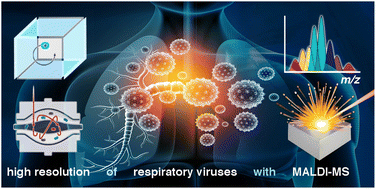High resolution mass spectrometry of respiratory viruses: beyond MALDI-ToF instruments for next generation viral typing, subtyping, variant and sub-variant identification†
Abstract
In the wake of the SARS-CoV2 pandemic, a point has been reached to assess the limitations and strengths of the analytical responses to virus identification and characterisation. Mass spectrometry has played a growing role in this area for over two decades, and this review highlights the benefits of mass spectrometry (MS) over PCR-based methods together with advantages of high mass resolution, high mass accuracy strategies over conventional MALDI-ToF and ESI-MS/MS instrumentation. This review presents the development and application of high resolution mass spectrometry approaches to detect, characterise, type and subtype, and distinguish variants of the influenza and SARS-CoV-2 respiratory viruses. The detection limits for the identification of SARS-CoV2 virus variants in clinical specimens and the future uptake of high resolution instruments in clinical laboratories are discussed. The same high resolution mass data can be used to monitor viral evolution and follow evolutionary trajectories.

- This article is part of the themed collections: Analyst Review Articles 2023 and Analyst HOT Articles 2023


 Please wait while we load your content...
Please wait while we load your content...